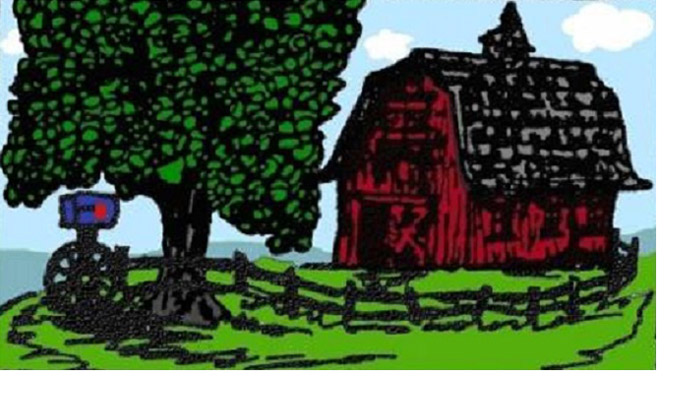WHAT YOU NEED WHEN YOUR WELL GOES OUT
Living in an unincorporated area, the majority of our homes are on septic & well. That’s great for avoiding city water bills, and the pump down in the well commonly lasts 20 years or so, but sooner or later something in the well system will let us down until repaired. The pump will eventually fail, or get burned out by a nearby lightning strike while it is running. Or the pressure switch will fail. Then, until you can get it fixed, you have no water at all – unless you have three things:
1. A friendly neighbor who will let you connect to their water system.
2. Enough garden hose between the two of you to reach between outside faucets on your houses.
3. A double-female hose connector.
The last item is inexpensive, available in most hardware stores, and rarely something you would think to keep at home.
With the agreement of your neighbor of course, you connect a hose to one of your outside faucets, and another to one of theirs. Where the hoses meet, each has a male end used to connect to nozzles and sprinklers, but not to another like fitting. So here is where you need the double-female connector to join those two hoses.
Once connections are tight, turn on the outside faucets on both houses. Now their water is feeding your water system. However, it is a very limited supply, with a lot of pressure loss through the hose. Fortunately, it’s enough to refill toilet tanks so you can flush toilets, and you can run a sink full of water to wash dishes or clean up (you still have both hot and cold water). There will not be enough flow to take a shower, though you could probably run a washing machine (quite slow filling).
So now you’re good to go – unless it’s winter. What if the outside temperature is below freezing? Then you need to keep water flow going continuously through the hose, fast enough to get to the destination home before it gets cold enough to freeze. So the needed flow rate depends on the outside temperature. I suppose you could stick a thermometer in the incoming water flow to see if it’s at least a few degrees above 32° F.
There are, however a few other things to watch for. You can still seem to have a normal water supply, although an element in the system has failed and is damaging other parts. That will hasten complete failure and expensive repairs:
1. The check valve in the well lets water flow in only one direction: it lets the pump push water into your well tank, but then not let it flow right back down into the well as soon as the pump shuts off. If you notice the pump cycling on and off frequently, even when no one is using water, you probably have a failed check valve. That is wearing out your pump, your pressure switch, and your bank account when you pay the electric bill.
2. Next, the well tank has inside it a rubber bladder whose job it is to hold compressed air without letting it contact the water in which some of it would dissolve. When the pressure in this bladder is set correctly by your well man, the pump comes on just before the tank gets empty. Then the pump pushes water into the tank, compressing the bladder’s size and so increasing the pressure in it. When that gets high enough the pump shuts off. The pressure from the bladder trying to expand again is what then pushes water through your water system until the tank gets near empty, and the pump comes on again. So your water pressure goes up and down during the pump cycle, something that’s particularly noticeable when watching how far your lawn sprinkler shoots water during the cycle.
The well tank’s most common failure mode is a hole developing in the bladder that lets all its air out, and the tank now fills completely up with water. The symptom that informs you about this is that the pump runs only during water use, and you might notice continuously high water pressure at the faucets. Again, you are wearing out the pump and the pressure switch which must turn off and on very often. If this happens, the tank must be replaced.
To summarize, well systems are pretty reliable and designed for a long service life. However, everything fails eventually, and to cover this case it’s a good idea to buy a double female hose connector, and then try to remember where you put it when your well (or a neighbor’s) goes out.
